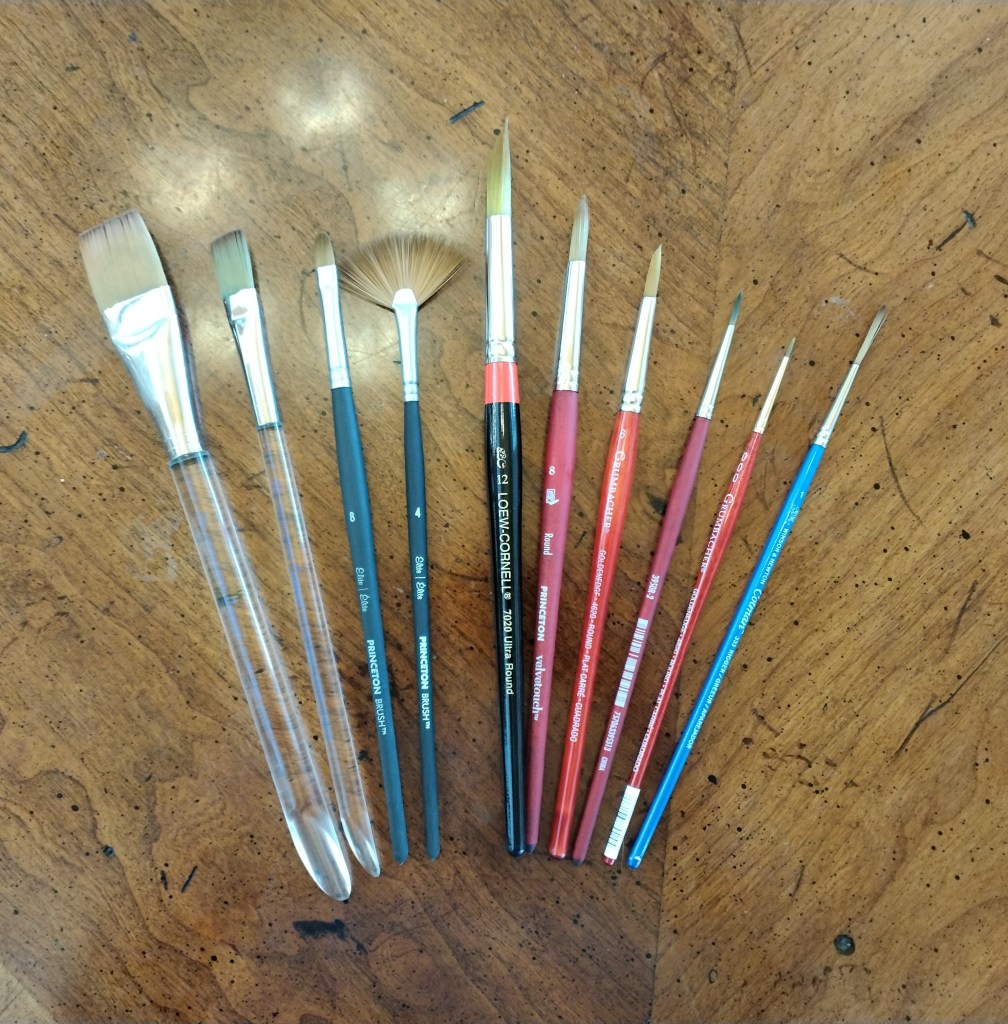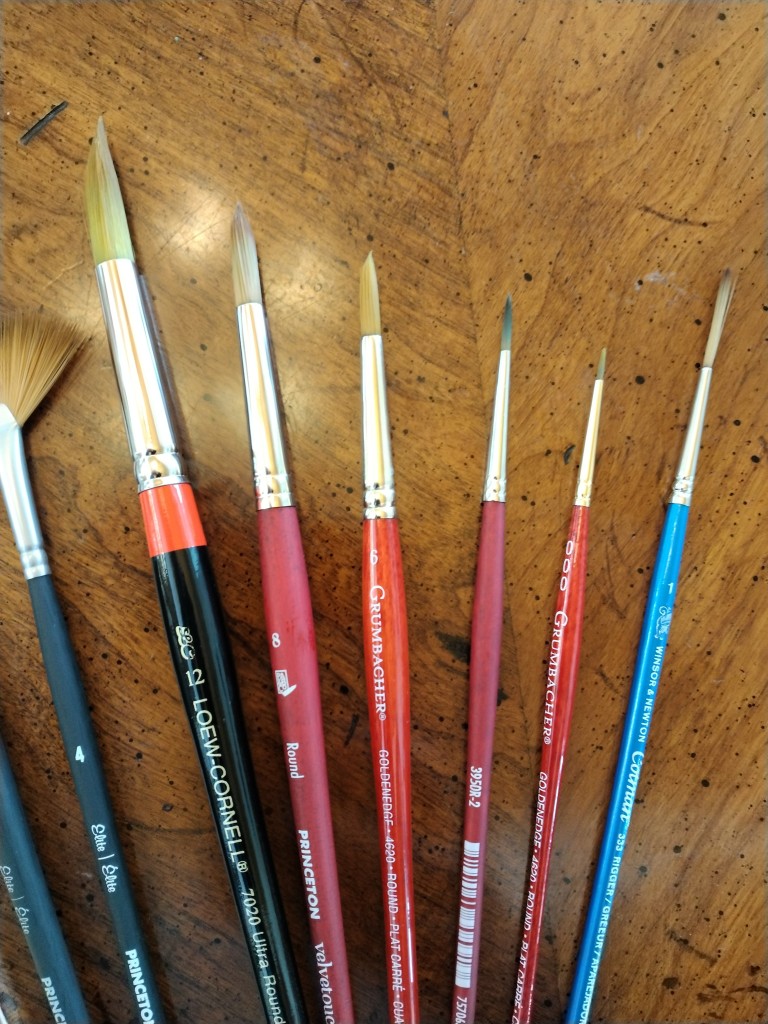Paint brushes are obviously a very important part of painting. There is a lot of opinions on the best brushes to use, but I have found that most brushes work, it’s mainly what you get used to. I did not start out with very expensive brushes when I began, nor should anyone, as you may not enjoy painting. But as I have gotten better, I have begun to purchase a somewhat more expensive brush, however, not the top of the line either, as I think again, you can paint with about anything, and it’s what you get used to. As you’ll notice from the pictures below, I have a variety of brands of brushes. My current favorite is made by Princeton.

The above picture is a large portion of the brushes I use. There are a few in-between sizes that are not pictured. One thing to make note of is my brushes are short handle brushes. I have some for acrylic painting that have really long handles, but I find that they get in the way for the most part. Most of the watercolor brushes I can buy locally though are short handles, and I think that seems to be the trend now. They are much easier to use, and I feel like give me more control, especially for fine detail.

The brushes pictured above are flat brushes as you can see, and I use these least of all. But I do keep them on hand for a variety of reasons. The big one on the left I use for large washes on large pieces of paper. It works great to lay down a lot of water really quickly and get the color on just as quickly. This is super important when the air is really dry, usually in the winter here in Alaska, and helps keep the background really smooth. The second from the left I rarely use. It is nice for straight lines and removing paint, and I use it on occasion, but definitely not necessary if you’re just beginning. The third brush I use more often, for again, straight lines, but also to scrub out patches of color where I want it lighter, as well as to put down crisp water lines in landscape paintings. While I don’t use it a ton, I like the rounded edges better than the square one next to it, and I would suggest one similar before you get the larger square one. The last brush in the picture is a fan brush. Again, I don’t use this one often, but it works great for grasses in landscapes and fur on animals.

Now on to my workhorse brushes. I love round brushes for watercolor. I use most of these brushes in all of my paintings. Having a variety of round brushes to choose from is essential, but if you are beginning, go with the even numbers, 0, 2, 4, 6, 8. Those I use most often. The largest round that I have is size 12, great for large washes like the large flat brush, but doesn’t cover the area as fast. I usually use the large flat and size 12 round for large washes, wetting the paper with the flat brush and then painting in the background with the large round brush, especially if I have to go around anything, this size 12 brush comes to a great point for precision work. The other brushes are used based upon need and area that I am trying to cover but are used in every painting that I paint. The brush on the far right is a rigor brush. I don’t use it as often as the rest, but for fine lines and details it is essential. The bristles are quite a bit longer, so a little practice might be necessary to make it work like you want, but it’s an important brush to have on hand.
If you are thinking about painting, I would recommend trying brushes from a variety of manufacturers, and like you are doing here, look at different people’s recommendations. Also, look at the different styles of painting from the various sources of brush recommendations. You can see the type of painting I do by looking at my prints on my website, zoom in and look at the details, zoom out and see if that’s the kind of painting you would like to do. If so, maybe try some of the same brushes. The type of paper you use, and the quality of paints used also affect how your painting will turn out. You can check out some of my recommendations for those on some of my previous blog posts as well.

You must be logged in to post a comment.